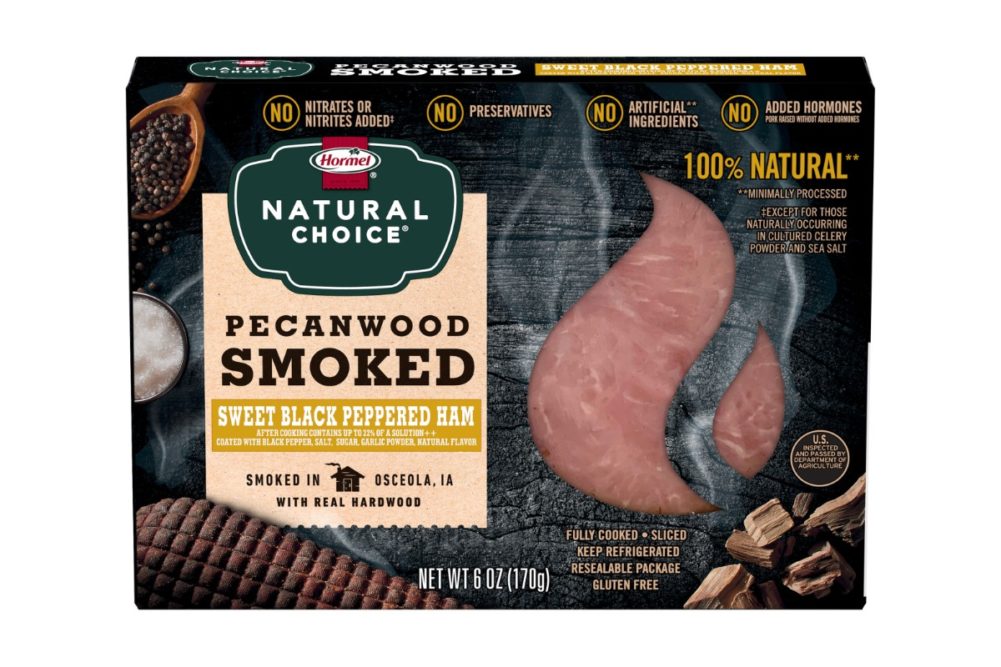The Centers for Disease Control and Prevention, Atlanta, is currently investigating a multistate outbreak of listeriosis that has resulted in one death and 10 people hospitalized. Listeriosis is a foodborne disease caused by Listeria monocytogenes, a pathogenic microorganism that is omnipresent in the environment. It is a facultative anaerobic bacterium capable of surviving in the presence or absence of oxygen. It can grow and reproduce inside the host’s cells and is one of the most virulent foodborne pathogens, with 20% to 30% of foodborne listeriosis infections in high-risk individuals being fatal.
Ready-to-eat (RTE) meats such as deli-style chicken, ham, pastrami, prosciutto, roast beef, salami and turkey are particularly vulnerable, as Listeria can live and thrive on plastic, metal and in water, too. While heat will kill this dangerous pathogen, RTE meats seldom undergo a sufficient heat treatment by consumers to destroy the bacteria.

There are a range of ingredients that may be included to assist with food safety; however, in efforts to keep labels as clean as possible, a growing number of meat processors are turning to high-pressure processing (HPP). This is a non-thermal treatment that renders packaged RTE meats free from pathogenic microorganisms. Companies such as Hormel Foods Corp., Austin, Minn., and its subsidiary, Applegate Farms, Bridgewater, NJ, use HPP on many RTE refrigerated meat and poultry products.
MEAT+POULTRY spoke with Errol Raghubeer, senior vice president, JBTAvure, Erlander, Ky., about using HPP to ensure the safety of RTE meats.
M+P: How can HPP help prevent RTE meat and poultry listeria-related recalls?
Raghubeer: The US Department of Agriculture’s Food Safety and Inspection Service (FSIS) issued a letter-of-no objection in March 2003 in response to data submitted by Avure Technologies for the use of HPP as a post-lethality treatment to control Listeria in meat processing plants. Since HPP’s early adoption in the 2000s, no company using HPP in any category of food or beverage has had a product recall. Since there are indications that the current Listeria outbreak occurred in products sliced at deli counters and in packaged retail products, it is likely a single-source manufacturer that sold contaminated product. Had HPP been used on both types of packaged products, the outbreak could have been eliminated.

M+P: The quality index shelf life graph for RTE meat and poultry products shows that HPP is more effective than standard processing for extending shelf life. What makes HPP more effective than standard processing?
Raghubeer: The HPP is an antimicrobial process that inactivates vegetative pathogens, spoilage bacteria, yeast and molds. One of the common causes of short shelf life of RTE meat products is the growth of spoilage bacteria, particularly strains of lactic acid bacteria. This is more of an issue with RTE meat products that do not contain chemical preservatives, which is a movement in the industry to meet customers’ demands. HPP is very effective in reducing these spoilage bacteria and eliminating yeasts and molds in products that do not contain chemical preservatives. It is very common for RTE meats treated with HPP to achieve a shelf life greater than three times that of RTE meat prepared using conventional processes.
In microbial analyses comparing non-HPP versus HPP commercial RTE meat products, it is quite common to see that HPP products will get 120 days of shelf life while the non-HPP product will start to show signs of spoilage within 45 days. Additionally, HPP is generally applied to RTE meat in the final package so contamination that occurs during packaging is inactivated whereas for products that are not treated in the final package, contamination before and after final packaging can grow and shorten the shelf life. It should be noted that high thermal treatment in the final package of some products such as hot dogs can also extend shelf life but with a significant loss of organoleptic properties. For some products, such a thermal treatment cannot be used. That’s the situation with fully cooked chicken strips, as there is too much loss of quality with HPP.
M+P: Why are RTE meats more prone to Listeria?
Raghubeer: Listeria is primarily an environmental contaminant. Meat processing plants and processing equipment are sources of Listeria contamination. Raw meat arriving from slaughterhouses and other sources can bring the organism into RTE meat processing facilities. Listeria can tolerate extreme environmental conditions. It survives and forms biofilms on processing surfaces and equipment that can be difficult to get rid of with normal sanitation procedures. One of the most significant avenues for contamination is slicing equipment, where the contamination occurs after the application of the heat lethality treatment, such as roasting, smoking, etc. It is a constant struggle for processors to maintain “sterility” of slicers. HPP is applied to RTE meat in the final package, which prevents contamination of the product being sold to consumers.




